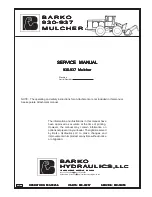
159
GLOSSARY
Glossary
AC (Alternating Current) —
A voltage or current of alternating polarity.
Access Unit —
A unit that allows multiple-device attachment at a central
location.
Address —
An identification code assigned uniquely to each device
or workstation connected to a network.
Analog —
A continuously varying signal that can take on any voltage
or current level.
Anomaly —
An impedance discontinuity causing an undesired signal
reflection on a transmission cable.
ANSI —
American National Standards Institute.
ARCNET (Attached Resources Computing Network) —
A token bus
developed by Datapoint.
ATM (Asynchronous Transfer Mode) —
A high-speed packet-switching
method.
Attenuation —
Reduction in the strength or power of a signal as it travels
over the length of a cable.
Attenuation to Crosstalk Ratio (ACR) —
An indication of the reliability of
data communications through a network. It is a computed value based
upon the measured values of attenuation and NEXT.
AUI (Attachment Unit Interface) —
Connects the transceiver and Network
Interface Card in 10BASE5 networks.
AWG (American Wire Gauge) —
The thickness of the conductor in a cable.
Backbone —
A central local area network used to interconnect two or
more other local area networks.
Balun —
A cable-impedance-matching RF transformer.
Bandwidth —
The difference between the highest and lowest frequency
available on a channel to effectively transmit signals.
Содержание SCAN-LAN VI
Страница 2: ......












































